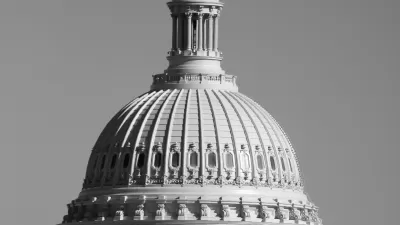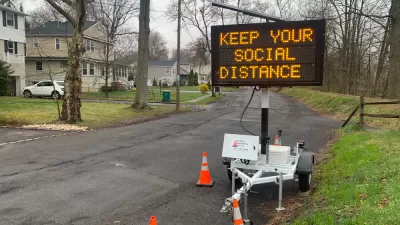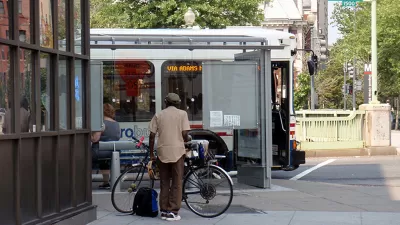Amanda Kolson Hurley surveys the innovative architecture and urban planning transforming America's notoriously stodgy capital into a model of progressive urbanism.
When one thinks of D.C.'s built environment, the first thing to come to mind isn't likely daring architecture or cutting-edge planning. At least partly due to its restrictive zoning and tradition of classically inspired architecture, Washington has long been considered, "one of the most traditional and risk-averse cities in the country," writes Hurley. But a number of recent and planned projects from world-renowned architecture and planning firms are poised to set the city on a different course.
Not surprisingly, in a city that serves as the seat of the federal government and a cornucopia of public institutions, Hurley credits public leadership (and the projects they've commissioned) with facilitating the city's change of ethos.
One example of such leadership is the recently unveiled Sustainable DC effort. "For years, city leaders have been working to shape a different
Washington: dense, diverse, green, and wholly urban in a way that the
Washington of the 1980s and early 1990s-starkly divided by income and
race, and bereft of people downtown after office hours-wasn't. In April,
Mayor Gray unveiled what may be the signature initiative of his
administration, Sustainable DC, which aims to make D.C. the greenest
city in the United States over the next 20 years....Much of the vision
behind Sustainable D.C. comes from Harriet Tregoning, the rock-star
planning director and a founder of the Smart Growth movement."
"The district leadership has actively engaged in urban improvements,
despite the oddness of having all these multiple jurisdictions in
control," says Lionel Lynch, head of the new D.C. office of HR&A Advisors. "They've tried to make sure there's a quality
public realm. You definitely feel that the District is getting its own
identity, or that it's becoming a lot more dominant over the federal
government, in a way that is self-reinforcing."
FULL STORY: Feature> A New Morning in Washington

Alabama: Trump Terminates Settlements for Black Communities Harmed By Raw Sewage
Trump deemed the landmark civil rights agreement “illegal DEI and environmental justice policy.”

Planetizen Federal Action Tracker
A weekly monitor of how Trump’s orders and actions are impacting planners and planning in America.

The 120 Year Old Tiny Home Villages That Sheltered San Francisco’s Earthquake Refugees
More than a century ago, San Francisco mobilized to house thousands of residents displaced by the 1906 earthquake. Could their strategy offer a model for the present?

Rural Population Grew Again in 2024
Americans continued to move to smaller towns and cities, resulting in a fourth straight year of growth in rural areas.

Safe Streets Grants: What to Know
This year’s round of Safe Streets for All grant criteria come with some changes.

Rural Missouri Transit Service Could Lose State Funding
OATS Transit offers low-cost rides to primarily elderly rural residents with little or no access to other transportation options.
Urban Design for Planners 1: Software Tools
This six-course series explores essential urban design concepts using open source software and equips planners with the tools they need to participate fully in the urban design process.
Planning for Universal Design
Learn the tools for implementing Universal Design in planning regulations.
Clanton & Associates, Inc.
Jessamine County Fiscal Court
Institute for Housing and Urban Development Studies (IHS)
City of Grandview
Harvard GSD Executive Education
Toledo-Lucas County Plan Commissions
Salt Lake City
NYU Wagner Graduate School of Public Service





























